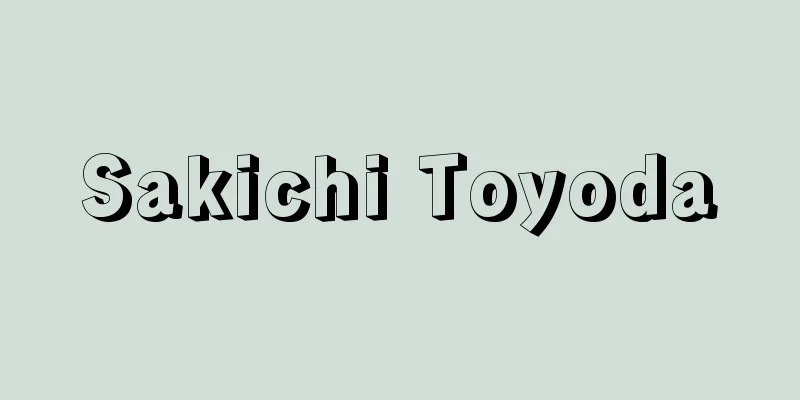Sengoku ship

|
Originally it referred to a ship that could carry 1000 koku of rice, but in the Edo period it came to refer to cargo ships of the 1000 koku class, especially large merchant ships. Formally known as bezai-sen (benzai-bune) or bezai-zukuri, this type of Japanese ship developed in the Seto Inland Sea in the second half of the 17th century and is characterized by sailing with a single mast and a large square sail. It was fundamentally different from the Japanese ships of ancient and medieval times, which were primarily rowed with oars and sailing was only a secondary means. A 1000 koku ship had 25 tan of sails and a crew of 15, while a 1600 koku ship would normally have 30 tan and 20 crew members. Economic development during the Edo period was largely due to the activities of these Sengoku ships, typical of which were the Higaki Kaisen and Taru Kaisen ships that frequently plied between Edo and Osaka, and the Kitamae Bune ships that were active connecting Hokkaido with the Seto Inland Sea and Osaka from the late Edo period through to the Meiji period. Particularly in the late Edo period, sailing techniques in crosswinds and against winds improved, and sailing speeds increased, while ship hulls grew in size from an average of 500 koku in the early period to 1,800 koku in the later period, significantly expanding the distribution of goods. [Yuzuki Manabu] “Fune” edited by Toshikazu Sudo (1968, Hosei University Press) [Reference] |The 1,000 koku Benzai-sen was a major ship in the shipping between Osaka and Edo in the mid-Edo period. Although the main sail was square, it sailed only by sailing, and the side rails were a distinctive feature of the ship. The bow was strong with a sharp angle, and the outer plate was made strong in three stages from bottom to top: the kajiki, the middle shelf, and the upper shelf, and a thick flat plate instead of a keel formed the central hull. ©Shogakukan Library "> Structure of the Benkai ship Source: Shogakukan Encyclopedia Nipponica About Encyclopedia Nipponica Information | Legend |
|
もとは米1000石を積む船のことをいったが、江戸時代になると、1000石積み級の荷船をさし、とくに大型の廻船(かいせん)の呼称となった。正式には弁才船(べざいせん/べんざいぶね)とかベザイ造りとよばれ、17世紀後半に瀬戸内海で発達してきた和船で、1本の帆柱と大きな横帆をあげて帆走するのが特色。古代・中世の和船が、櫓(ろ)で漕(こ)ぐのを主とし、帆走は補助的手段であったのに対し、根本的に異なっていた。1000石積み船で帆反数が25反、乗組員15人で、これが1600石積み船では30反、20人が普通であった。江戸時代の経済の発展は、この千石船の活動によるところ大で、江戸―大坂間を頻繁に往復していた菱垣(ひがき)廻船や樽(たる)廻船、また江戸後期から明治時代にかけて北海道と瀬戸内・大坂を結んで活躍した北前船(きたまえぶね)などは、その典型的なものであった。とくに江戸後期には横風や逆風時の帆走技術も上達して、航海速力もスピードアップしていく一方、船体も前期の平均500石積みから後期には1800石積みにまで大型化し、商品流通を著しく拡大していった。 [柚木 学] 『須藤利一編著『船』(1968・法政大学出版局)』 [参照項目] |江戸時代中期に大坂―江戸間の海運の主役をなした千石積み弁才船。主帆は横帆ながら、帆走のみで航海し、舷側の垣立が特色の船である。水押(船首材)が鋭角で強大、外板は下から順にかじき、中棚、上棚の3段階にして強くし、竜骨にかわる厚い平板の航を中央船底とした©小学館ライブラリー"> 弁才船の構造 出典 小学館 日本大百科全書(ニッポニカ)日本大百科全書(ニッポニカ)について 情報 | 凡例 |
<<: National Buraku Liberation Movement Association - Zenkoku Buraku Kaiho Undourengoukai
Recommend
Amarna (English spelling)
The site of the capital of Akhenaten, the 18th Dyn...
Yugoi (boiled carp) - Yugoi (English spelling) Kuhlia marginata
A fish of the family Polycarpidae (illustration) i...
Serous inflammation
...In addition, the histopathological classificat...
Anthocyan - Anthocyan (English spelling)
A group of plant pigments, referring to the pigme...
Machine gun
A machine gun is a fully automatic gun that uses ...
Church architecture
The catacombs of the early Christian period canno...
Indigofera tinctoria (English spelling)
…【Arai Yoshie】. … *Some of the terminology that m...
Greenland - Greenland (English spelling)
The world's largest island, located northeast...
Sakuotoko - Saku man
A live-in servant in a farming household. They ar...
Krylov, Ivan Andreevich
Born: February 13, 1769, Moscow Died November 21, ...
Akinakes-style bronze sword
...a double-edged weapon for stabbing and slashin...
Waset - Uaseto
...The city stretches along both sides of the Nil...
Izōnoura
…It is divided into several bays, with Watakano I...
Glycolysis
This refers to the anaerobic metabolic pathway fr...
magot
…They live in the Atlas Mountains of Morocco and ...









